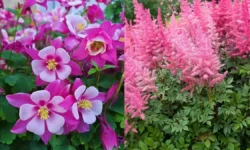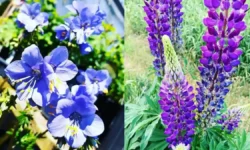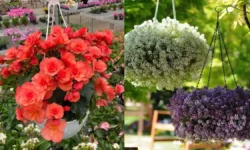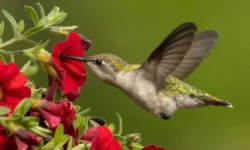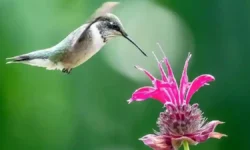Pepper plants are a favorite among gardeners for their vibrant fruits and relatively easy cultivation. However, a common and frustrating issue many growers encounter is the yellowing of pepper plant leaves. Yellow leaves not only detract from the plant’s appearance but can also indicate underlying problems that might compromise yield and plant health if left untreated. Understanding the reasons behind yellow leaves and knowing how to respond is vital for anyone growing peppers successfully.
Yellowing of pepper plant leaves can be caused by numerous factors, including nutrient deficiencies, improper watering, pests, diseases, environmental stress, or soil problems. This discoloration is a signal that the plant is under stress and needs attention. Identifying the exact cause involves examining the plant carefully, assessing its environment, and understanding its care requirements. This article delves into the primary reasons why pepper plants develop yellow leaves and provides practical guidance on what actions gardeners should take to restore plant vitality.
Table of Contents
Understanding Leaf Yellowing in Pepper Plants
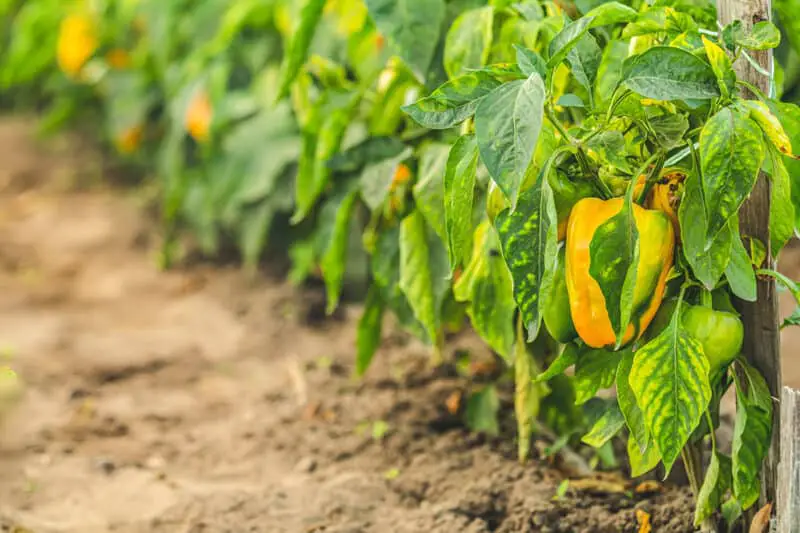
What Does Yellowing Indicate?
Yellow leaves on pepper plants generally signify chlorosis—a condition where the leaves lack sufficient chlorophyll, the pigment responsible for green coloration and photosynthesis. Chlorosis reduces the plant’s ability to produce energy, which is vital for growth and fruit development. When leaves turn yellow, it means the plant is stressed and its physiological processes are compromised.
This yellowing can manifest in different patterns, such as uniform yellowing across the entire leaf, yellowing between the veins (interveinal chlorosis), or yellow spots. The pattern and location of yellowing provide important clues about the underlying cause.
Natural Aging Versus Problematic Yellowing
Some yellowing is natural and part of the plant’s lifecycle. Older leaves, especially those at the bottom of the plant, may turn yellow and drop as the plant directs energy toward new growth and fruiting. This process usually occurs gradually without other symptoms and is not cause for concern.
Problematic yellowing, however, is often rapid, widespread, or accompanied by other symptoms such as leaf curling, wilting, spots, or stunted growth. This type of yellowing requires investigation and corrective measures.
Common Causes of Yellow Leaves on Pepper Plants
Nutrient Deficiencies and Their Effects
Pepper plants require a balanced supply of nutrients to thrive, and deficiencies are a leading cause of leaf yellowing. Nitrogen deficiency often causes older leaves to turn yellow first because nitrogen is mobile within the plant and will be translocated to newer tissues during shortage. Lack of nitrogen weakens the plant and reduces fruit production.
Magnesium deficiency is another common cause, typically showing as yellowing between leaf veins while veins remain green, mainly on older leaves. This condition reduces photosynthesis efficiency.
Iron deficiency also causes interveinal chlorosis but usually appears first on younger leaves because iron is immobile within the plant.
Calcium deficiency often causes distorted growth and yellowing at leaf margins, along with blossom-end rot on fruits.
Understanding which nutrient is lacking is crucial to apply the right treatment and restore the plant’s health.
Watering Issues: Overwatering and Underwatering
Both overwatering and underwatering can induce yellowing leaves. Overwatering saturates the soil, leading to poor oxygen availability for roots. This condition results in root rot, reducing the roots’ ability to absorb nutrients and water, which leads to yellow, drooping leaves.
Underwatering, on the other hand, causes drought stress. The plant responds by reducing transpiration, which may result in leaf yellowing and leaf drop as the plant tries to conserve moisture.
The key is maintaining consistent soil moisture without waterlogging. The soil should feel moist but not soggy.
Pest Infestations and Damage
Various pests target pepper plants and can cause leaf yellowing. Aphids, spider mites, whiteflies, and thrips feed on plant sap, damaging the leaves and introducing diseases. Their feeding causes chlorosis, stippling, or mottling of leaves.
Heavy infestations weaken plants, reduce photosynthetic capacity, and cause premature leaf drop.
Early identification and management of pests are essential to prevent irreversible damage.
Diseases Causing Leaf Yellowing
Pepper plants are susceptible to several diseases that lead to yellow leaves. Bacterial leaf spot causes dark spots surrounded by yellow halos. Fungal infections like powdery mildew, downy mildew, and verticillium wilt also cause yellowing and leaf drop.
Root diseases such as Phytophthora root rot cause the plant to wilt and develop yellow leaves due to poor water uptake.
Disease management includes proper sanitation, resistant varieties, crop rotation, and fungicide application if necessary.
Environmental and Soil Conditions
Environmental stressors significantly influence leaf health. Excessive heat causes leaf scorch and yellowing, while cold stress slows metabolism and leads to chlorosis.
Poor soil drainage, compacted soil, or improper pH can limit nutrient availability. Peppers prefer slightly acidic to neutral soil (pH 6.0-7.0). Outside this range, nutrient uptake becomes inefficient, resulting in yellowing.
Sunlight is also a factor—pepper plants need full sun for at least six hours daily. Too little light weakens plants and causes yellowing, while excessive direct sun may burn leaves.
How to Diagnose the Cause of Yellow Leaves
Observing Yellowing Patterns
Careful observation helps pinpoint the cause. Uniform yellowing starting from older leaves suggests nitrogen deficiency or overwatering. Yellowing between veins on older leaves may indicate magnesium deficiency. If young leaves are yellowing between veins, iron deficiency is likely.
Spotting patterns or lesions alongside yellowing might signal diseases or pest damage.
Checking Soil and Root Health
Examining the soil moisture and drainage is vital. Waterlogged soil and foul odors often mean root rot. Gently removing the plant from its pot to inspect roots can reveal brown, mushy roots indicative of disease.
Healthy roots are firm and white or light tan.
Inspecting for Pests
Look closely at leaf undersides and stems for tiny insects or webbing. Using a magnifying glass may help detect minute pests like spider mites.
Noting pest presence guides appropriate pest control measures.
Testing Soil pH and Nutrient Levels
Soil testing kits or laboratory analysis provide accurate pH and nutrient information. Correcting soil pH and supplementing deficient nutrients is key to recovery.
What To Do When Pepper Plants Are Turning Yellow
Adjust Watering Practices
Water pepper plants deeply but infrequently, allowing soil to dry slightly between waterings. Avoid water accumulation in pots or garden beds. Using mulch helps retain soil moisture and regulate temperature.
Observe plants regularly and adapt watering frequency to weather and soil conditions.
Provide Balanced Fertilization
Apply a fertilizer formulated for vegetable or pepper plants that contains nitrogen, phosphorus, potassium, and micronutrients. Use according to label instructions to avoid over-fertilization, which can harm plants.
Slow-release fertilizers or organic options like compost or fish emulsion improve soil health gradually.
Control Pests Effectively
Introduce natural predators such as ladybugs or lacewings if feasible. For infestations, insecticidal soaps or neem oil are effective and less harmful to beneficial insects.
Regularly inspect plants and isolate affected ones to prevent spread.
Manage Diseases with Care
Remove and destroy infected leaves to reduce inoculum. Maintain good garden hygiene by cleaning tools and avoiding overhead watering to limit fungal growth.
Applying fungicides or bactericides may be necessary, but always follow recommended usage to minimize environmental impact.
Improve Environmental Conditions
Ensure pepper plants receive adequate sunlight and protect them from harsh winds and extreme temperatures. Adjust soil pH by adding lime to raise it or sulfur to lower it, depending on test results.
Use raised beds or amend heavy soils with organic matter to enhance drainage.
Preventing Yellow Leaves on Pepper Plants
Start with Healthy Plants
Select disease-resistant pepper varieties and purchase plants from reputable sources.
Maintain Proper Garden Hygiene
Clean gardening tools, remove plant debris, and practice crop rotation to reduce pests and diseases.
Monitor Plants Regularly
Early detection of yellowing or other symptoms allows prompt treatment.
Optimize Growing Conditions
Ensure plants get full sun, proper spacing for airflow, and well-drained fertile soil.
When to Remove Yellow Leaves
Removing severely yellowed leaves can help the plant focus energy on healthy growth. Use clean pruning shears and avoid damaging healthy tissue.
However, some yellowing on older leaves is natural and may not require removal.
FAQs About Pepper Plants Turning Yellow
Why are my pepper plants turning yellow?
Pepper plants turn yellow due to factors like nutrient deficiencies, improper watering, pests, diseases, or environmental stress.
Can yellow leaves recover on pepper plants?
If yellowing is caused by reversible issues such as watering or nutrient problems, new healthy leaves can grow with proper care. Severely damaged leaves usually need to be removed.
How often should I water my pepper plants?
Water pepper plants deeply but allow the soil to dry slightly between waterings. Frequency depends on climate and soil but generally once or twice a week is sufficient.
What pests cause yellowing on pepper leaves?
Common pests include aphids, spider mites, whiteflies, and thrips, which feed on sap and damage leaves, causing yellowing and spotting.
How can I prevent my pepper plants from turning yellow?
Maintaining balanced fertilization, proper watering, good sunlight, pest management, and healthy soil conditions helps prevent yellow leaves.
Conclusion
Yellow leaves on pepper plants are a common but manageable issue indicating underlying stresses. By understanding the possible causes—including nutrient deficiencies, watering problems, pests, diseases, and environmental factors—gardeners can diagnose and address the problem effectively.
Maintaining consistent care, balanced nutrition, and a healthy environment ensures robust pepper plants with vibrant green leaves and abundant fruit production. Prompt action at the first signs of yellowing safeguards your garden’s productivity and beauty.
With patience and attention, yellow leaves can be minimized, helping your pepper plants thrive season after season.

